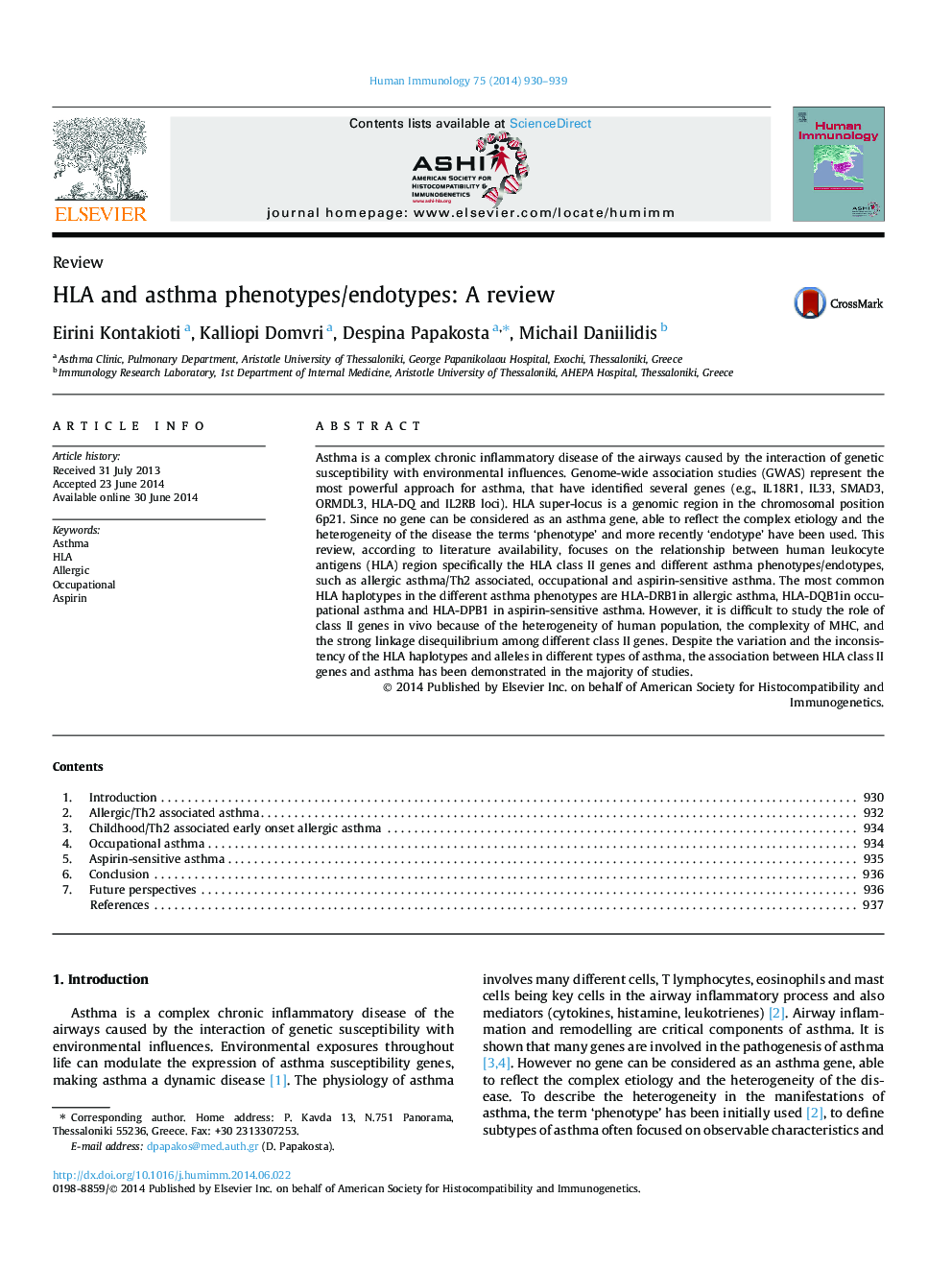| Article ID | Journal | Published Year | Pages | File Type |
|---|---|---|---|---|
| 3350339 | Human Immunology | 2014 | 10 Pages |
Asthma is a complex chronic inflammatory disease of the airways caused by the interaction of genetic susceptibility with environmental influences. Genome-wide association studies (GWAS) represent the most powerful approach for asthma, that have identified several genes (e.g., IL18R1, IL33, SMAD3, ORMDL3, HLA-DQ and IL2RB loci). HLA super-locus is a genomic region in the chromosomal position 6p21. Since no gene can be considered as an asthma gene, able to reflect the complex etiology and the heterogeneity of the disease the terms ‘phenotype’ and more recently ‘endotype’ have been used. This review, according to literature availability, focuses on the relationship between human leukocyte antigens (HLA) region specifically the HLA class II genes and different asthma phenotypes/endotypes, such as allergic asthma/Th2 associated, occupational and aspirin-sensitive asthma. The most common HLA haplotypes in the different asthma phenotypes are HLA-DRB1in allergic asthma, HLA-DQB1in occupational asthma and HLA-DPB1 in aspirin-sensitive asthma. However, it is difficult to study the role of class II genes in vivo because of the heterogeneity of human population, the complexity of MHC, and the strong linkage disequilibrium among different class II genes. Despite the variation and the inconsistency of the HLA haplotypes and alleles in different types of asthma, the association between HLA class II genes and asthma has been demonstrated in the majority of studies.
